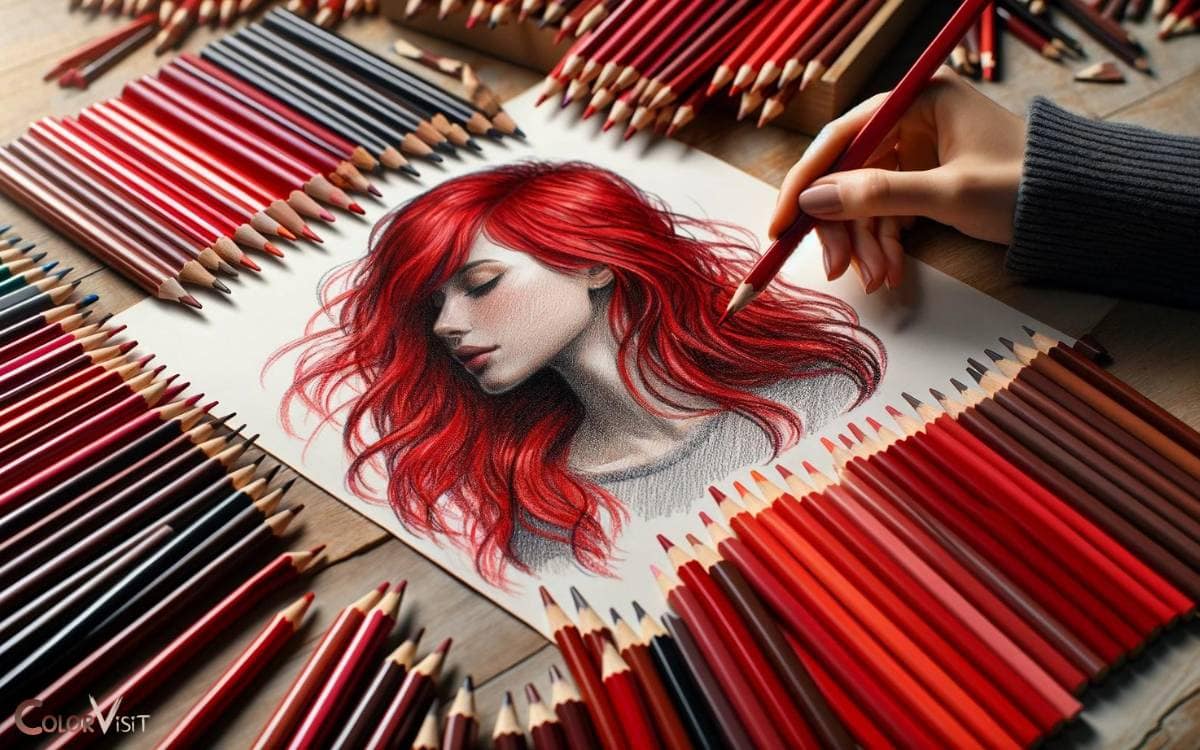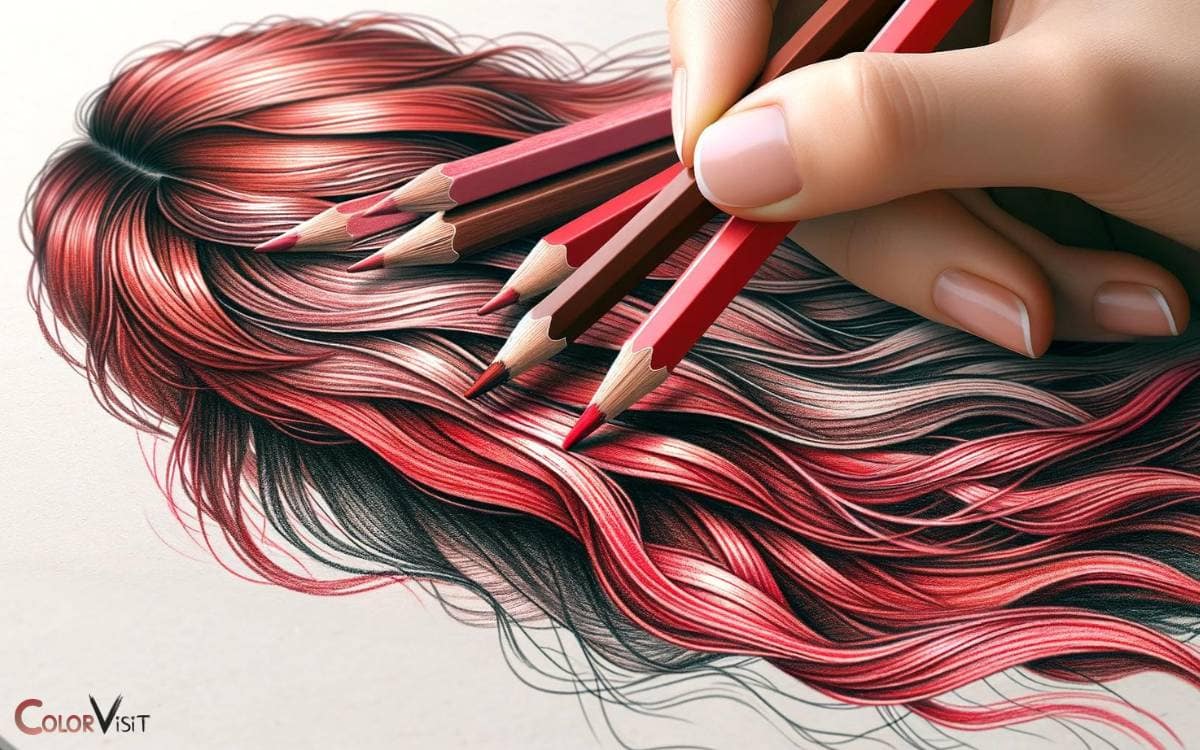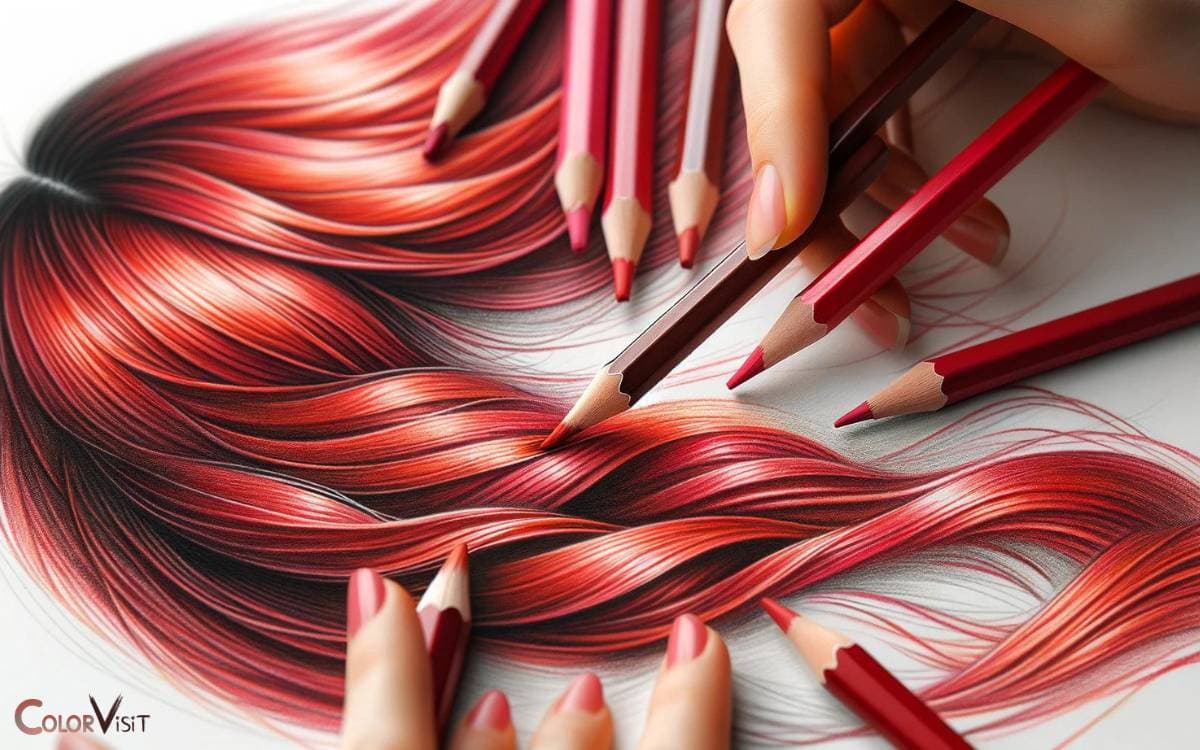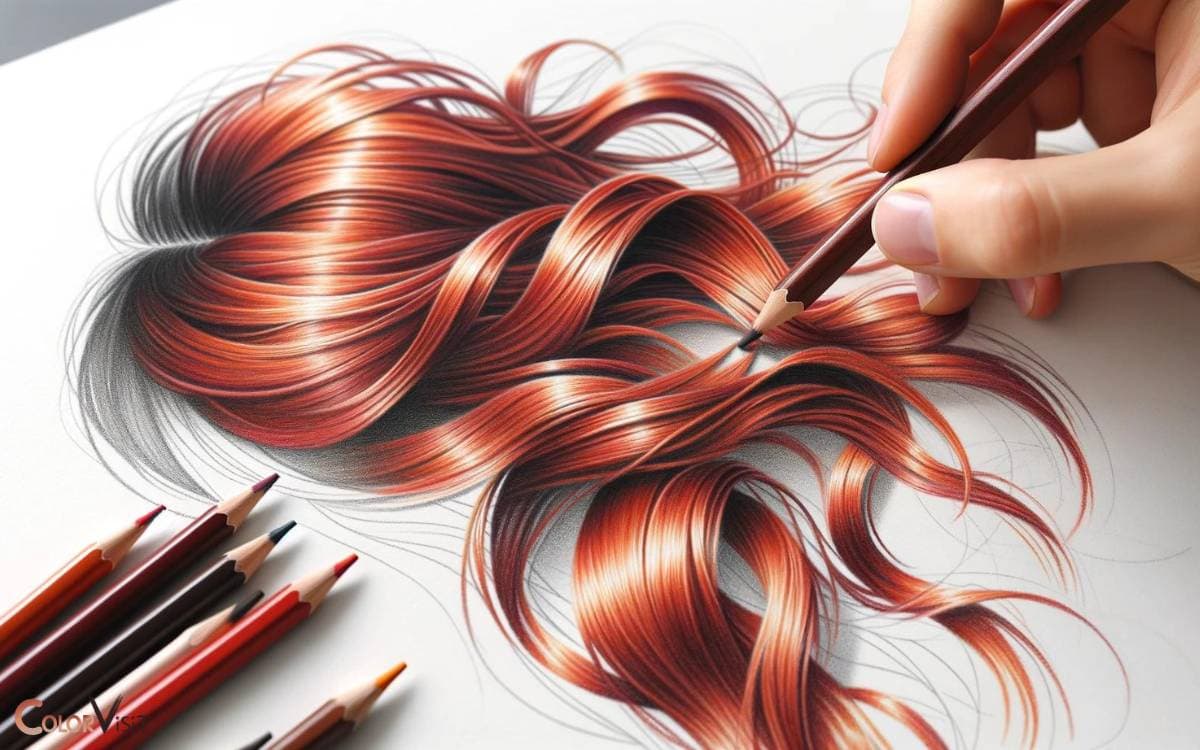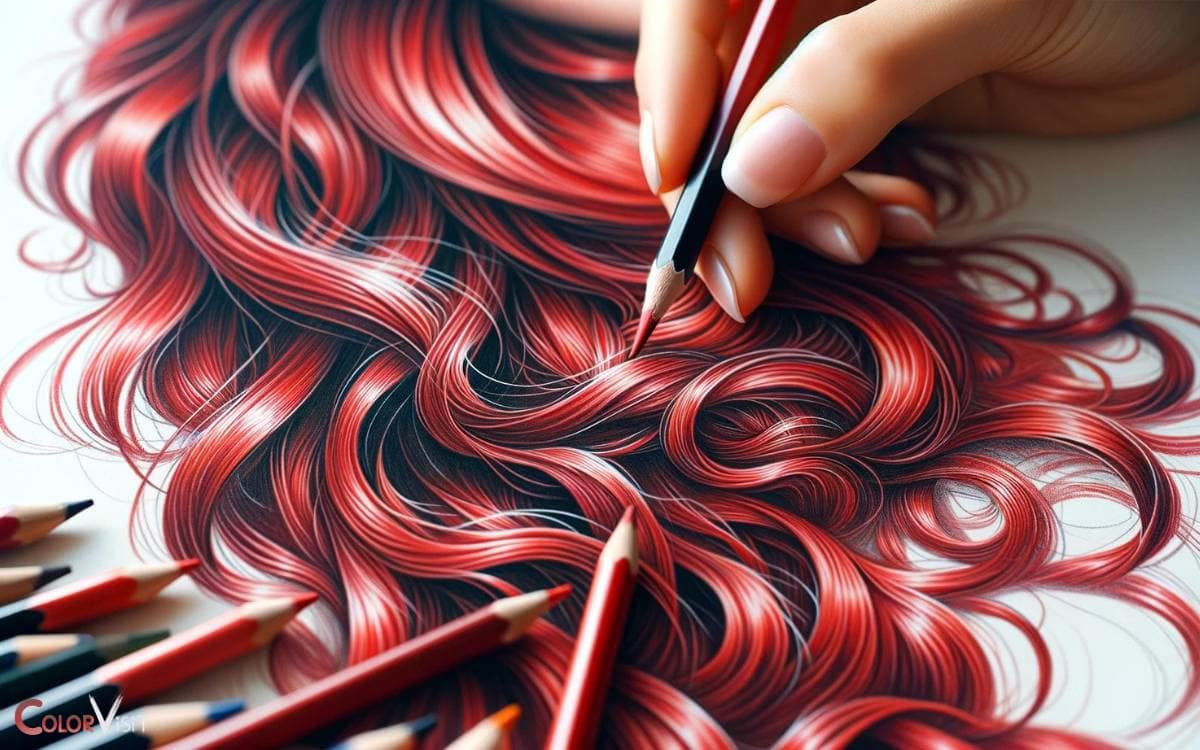How to Color Red Hair with Colored Pencils? 5 Steps!
To color red hair with colored pencils, one must master the art of hue selection, layering, and blending techniques.
Here’s a Quick steps:
Enhancing your colored pencil skills through the coloring of red hair brings a new level of realism to your artwork. It’s a technique that demands careful color selection, layering, and blending.
Key Takeaway
Step: 1 Choosing the Right Red Pencil Shades
Selecting the appropriate red pencil shades for coloring red hair with colored pencils is a crucial step that should always be done meticulously and thoughtfully.
- Shade selection plays a pivotal role in capturing the natural depth and dimension of red hair.
- Understanding color theory is essential for this process, as it enables the artist to grasp the interplay of different red tones, highlights, and shadows within the hair.
- Innovation in this context involves experimenting with various shades to achieve a harmonious blend that reflects the complexity of red hair.
Step: 2 Layering Techniques for Realistic Texture
To achieve realistic texture when coloring red hair with colored pencils, layering is essential for building depth and dimension within the hair strands. Texture techniques play a pivotal role in creating a lifelike portrayal of red hair.
- By layering different shades of red and complementary colors, artists can achieve a sense of color depth that mimics the natural variation found in red hair.
- To create highlights and lowlights, varying pressure and directional strokes can be employed to emulate the way light interacts with the strands.
- This meticulous approach results in a more realistic and dynamic representation of red hair.
By mastering layering techniques, artists can bring an unparalleled level of authenticity to their colored pencil renditions of red hair, capturing the vibrant and multidimensional nature of this distinct hair color.
Step: 3 Blending for Seamless Transitions
The mastery of blending techniques is crucial for achieving seamless transitions between layers of colored pencils when depicting the natural nuances and highlights within red hair strands.
To elevate your red hair coloring game, consider the following blending tips:
- Layering Effect: Experiment with layering different shades of red to create depth and dimension, enhancing the color intensity and richness of the hair.
- Use of Solvents: Utilize odorless mineral spirits or blending pencils to dissolve the wax in colored pencils, allowing for smoother blending and seamless transitions between colors.
- Directional Strokes: Vary the pressure and direction of your pencil strokes to simulate the natural flow and texture of red hair, ensuring a more realistic portrayal.
Step: 4 Adding Highlights and Low-lights
Red hair’s allure can be heightened by skillfully incorporating highlights and low-lights, lending depth and dimension to the overall coloring.
- When adding highlights and low-lights to red hair using colored pencils, it’s essential to understand blending techniques to achieve a natural look.
- Begin by selecting a lighter shade for the highlights and a slightly darker shade for the low-lights, ensuring the color intensity complements the base red tone.
- Use gentle, feathering strokes to apply the lighter color for highlights, focusing on areas where the light naturally hits the hair.
For low-lights, softly layer the darker shade underneath the red strands to create depth.
Step: 5 Final Touches and Finishing Details
After blending the highlights and low-lights seamlessly into the red hair, the final touches and finishing details involve ensuring a smooth and polished appearance.
To achieve this, consider the following innovative techniques:
- Smudging Techniques: Utilize specialized blending tools to softly smudge and blend the colored pencil pigments, creating a natural transition between the different tones and enhancing the overall depth and dimension of the red hair.
- Hairline Definition: Pay careful attention to the definition of the hairline, using precise strokes and shading techniques to mimic the natural flow and texture of the hair, ultimately elevating the realism of the colored pencil artwork.
- Tonal Variation: Introduce subtle variations in tone and saturation to different areas of the red hair, adding complexity and visual interest to the overall composition, resulting in a captivating and lifelike representation.
Conclusion
Coloring red hair with colored pencils requires careful selection of pencil shades, layering techniques for texture, blending for seamless transitions, and adding highlights and low-lights.
The final touches and finishing details are crucial for a realistic and vibrant result. Remember, practice makes perfect and patience is key in mastering this artistic skill.
So, grab your pencils, embrace your creativity, and let your inner artist shine through in every stroke!


